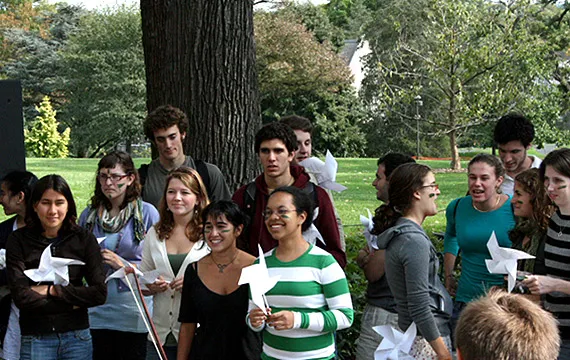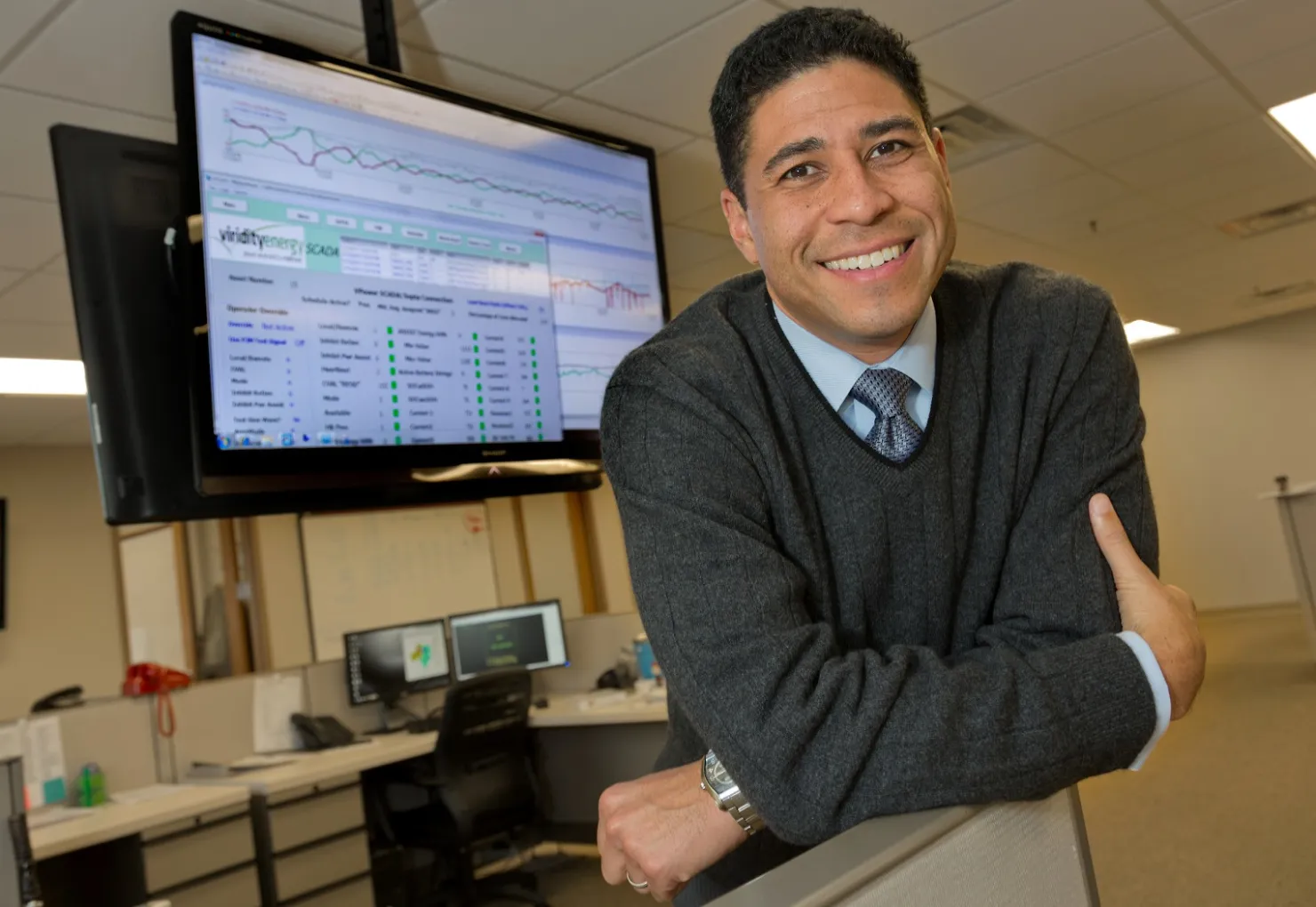Energy Systems

Campus Activity
Then-President Rebecca Chopp signed the American College & University Presidents' Climate Commitment (now the Carbon Leadership Commitment) in 2010, joining the leaders of institutions of higher education across the country in accelerating educational and operational efforts to address climate change. Over the past several years, Swarthmore College has steadily reduced its use of electricity and heating fuel. Some of this progress has come as a result of cutting out waste and managing use, while the College has also worked to make more responsible energy choices over time.
See here for real-time electrical demand and water usage data in campus buildings.
Heating and Cooling
- Swarthmore College has purchased Renewable Energy Credits in the form of wind power since 1999. The College has gradually increased that commitment so that currently 100% of the College's greenhouse gas emissions generated as a result of electricity are offset by Renewable Energy Credits.
- The College, in partnership with the Borough of Swarthmore, has been recognized as a Green Power Community and is listed as a leader in the Green Power Partnership sponsored by the EPA.
- The College's Building Management System allows the staff of the facilities department to centrally monitor and control heating and lighting for all buildings. This ensures that buildings and rooms are only heated/cooled when they are in use.
- Meters in the Heat Plan monitor fuel and electric use for the campus as a whole. A series of submeters monitor electric and water use at the building level. The facilities department is looking to install more submeters to explore ways of further reducing energy use in individual buildings.
- The College has installed high efficiency boilers in buildings not served by the Heat Plant. One such installation dropped the buildings gas use by 40% as measured against the previous year and correcting for heating degree days.
- During regular hours, winter temperatures are set to 68 degrees and summer temperatures are set to 76 degrees.
- In winter months, temperatures are set back on nights and weekends and at midday in dormitories.
- Building temperatures are set back during holiday breaks and domestic hot water turned off.
- Most laundry units on campus are high-efficiency models.
- The College practices load shedding.
- More information about the College's approach to heating and cooling are available on the Facilities Department website.
Energy Conservation
- Lighting occupancy sensors have been installed in all of the College's newest buildings, allowing for spaces to be well-lit when people are present, and for rooms to go dark when they are unoccupied.
- The College has conducted lighting upgrades in in dorms, classrooms, administrative buildings, streetlights, and more. One of the most visible projects was replacing one thousand fifty six 6 Watt incandescent lamps in Sharples Dining Hall with an equal number of 2 Watt LED lamps saving 15,375 kilowatt hours annually. The resulting energy savings will result in pay back on the investment within two years.
- Occupancy sensors and light-sensors have been installed to help manage lighting needs in areas that receive infrequent use or that often have ample natural light.
- All public computers run on power save mode and computers used by faculty and staff are by default set to power save mode.
- Public computers shut off automatically from midnight to 7 a.m.
- All purchased computers are Energy Star certified.
- More information about the College's energy use and conservation efforts is available on the Facilities Department website.




